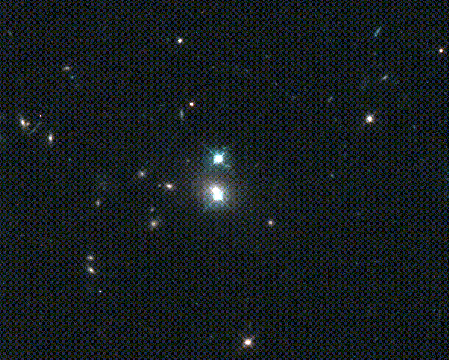
Q0957+561A (upper luminous object) and B (lower object). The galaxy responsible for the effect can be barely seen near the B object.

Q0957+561A (upper luminous object) and B (lower object). The galaxy responsible for the effect can be barely seen near the B object.
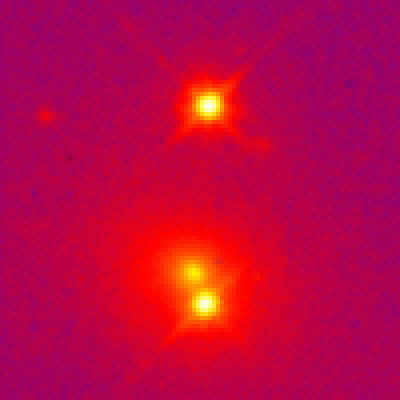
Q0957+561A (upper luminous object) and B (lower object). The galaxy responsible for the lens effect is clearly seen near the B object. In this false colour picture from Hubble objects A and B are separated by 6 arcseconds while the separation between the galaxy and B is only 1 arcsecond and hence B is seen "through" the halo of the galaxy.
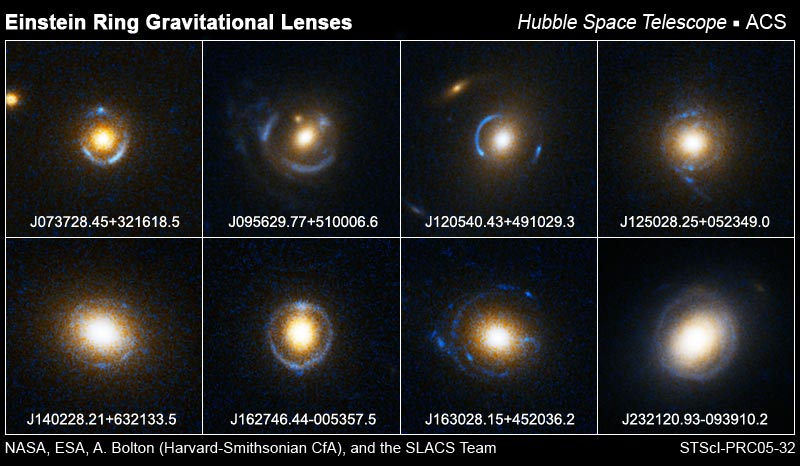
Eight examples of Einstein Rings from Hubble.
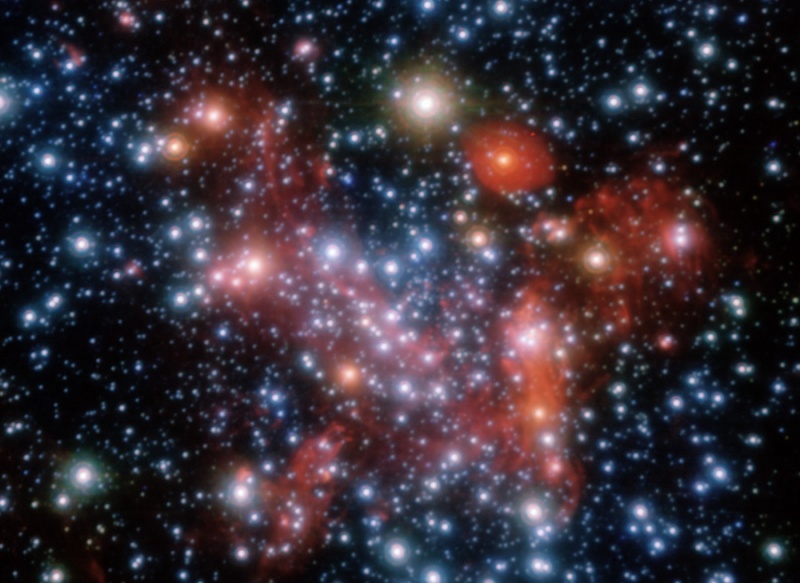
At the center of our Milky Way Galaxy lies a supermassive black hole. Once a controversial claim, this conclusion is now solidly based on 16 years of observations that map the orbits of 28 stars very near the galactic center. Using European Southern Observatory telescopes and sophisticated near infrared cameras, astronomers patiently measured the positions of the stars over time, following one star, designated S2, through a complete orbit as it came within about 1 light-day of the center of the Milky Way. Their results convincingly show that S2 is moving under the influence of the enormous gravity of a compact, unseen object -- a black hole with 4 million times the mass of the Sun. Their ability to track stars so close to the galactic center accurately measures the black hole's mass and also determines the distance to the center to be 27,000 light-years. This deep, near-infrared image shows the crowded inner 3 light-years of the central Milky Way.

This picture and the next one have been downloaded from astro-ph/0608407. They show the merging cluster 1E0657-558 (the white bar represents 200 Kpc). By gravitational lensing techniques, the baryonic matter (shown as matter shocks) has segregated from the main matter component (possibly made of dark matter) here seen as confidence level contours of density of matter.
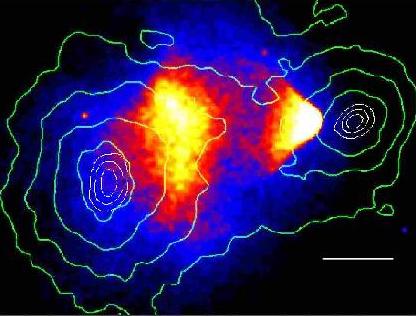
See above caption.
|
|
The map on the top includes the dipole and Galaxy, the dipole removed map in the middle, and the reduced map on the bottom. The dipole, a smooth variation between relatively hot and relatively cold areas from the upper right to the lower left, is due to the motion of the solar system relative to preferred CMB frame. The bottom image just shows the reduced map (i.e., both the dipole and Galactic emission subtracted). The cosmic microwave background fluctuations are extremely faint, only one part in 105 compared to the 2.73 degree Kelvin average temperature of the radiation field. The cosmic microwave background radiation is a remnant of the Big Bang and the fluctuations are the imprint of density contrast in the early universe. The density ripples are believed to have given rise to the structures that populate the universe today: clusters of galaxies and vast regions devoid of galaxies. |
In the Fig.1 we show the largest DRAGN (double radio source associated to a galactic nucleus) in the northern sky, NGC 6251. It lies about 70 Mpc from us. It was missed in several early radio surveys because its radio emission is too spread to be easily identified as a single object.
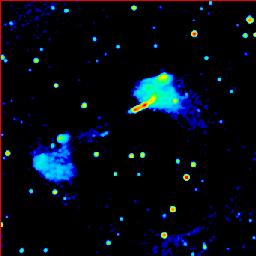
Figure 1: NGC 6251.
The same object, shown as radio contours from Rev. Mod. Phys. 56 255 (1984), is reproduced in Fig.2. The first zoom is applied to the central galactic nucleus and shows the jet and counterjet that streams out from it. The second zoom centers the jet (also reproduced as a false colour in Fig.3). The last zoom is on the active nucleus of the galaxy.
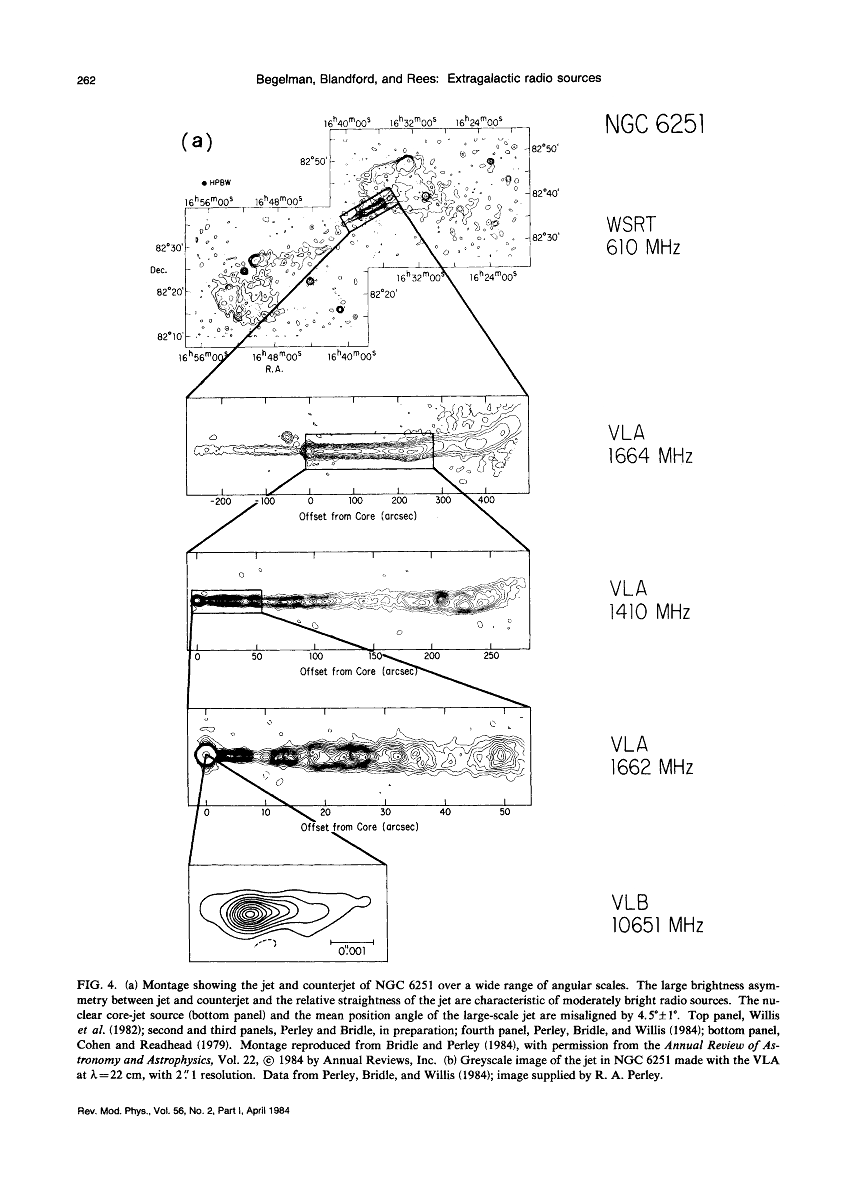
Figure 2: Details of NGC 6251.
The jet shown in Fig.3 is about 6 105 light-years long. The engine that keeps it so well collimated for such a long distance is still unknown. However one of the most robust hypotheses is that it is due to the Frame Dragging of the space around the rotating giant black hole that is possibly harboured in the center of the galaxy.
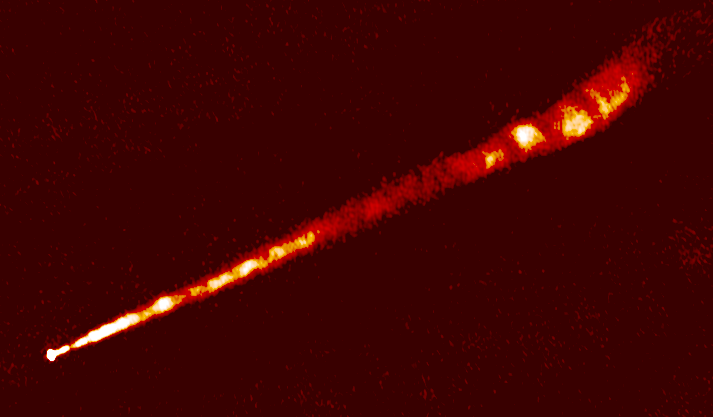
Figure 3: Jet in NGC 6251. It corresponds to the second zoom in above Figure 2.
The last image (Fig.4) shows the AGN (active galactic nucleus) of NGC 6251. The light of the central black hole is reflected on the disk around it. The interesting fact in this image is that the disk looks warped (like the brim of a hat). The possibility of a Lense-Thirring precession of the rotating disk as the cause of such a warping has been advanced. However it seems unlikely (see astro-ph/0510650 or Astrophys. J. 643 101 (2006)) since it is a too weak effect.
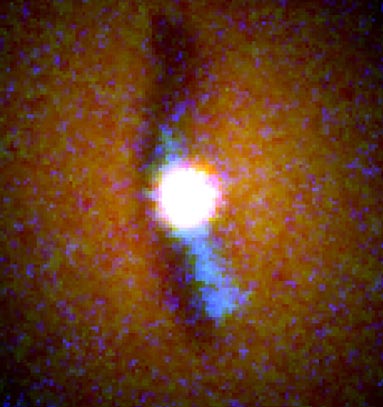
Figure 4: Central AGN in NGC 6251. This picture combines visible and ultraviolet light observations.
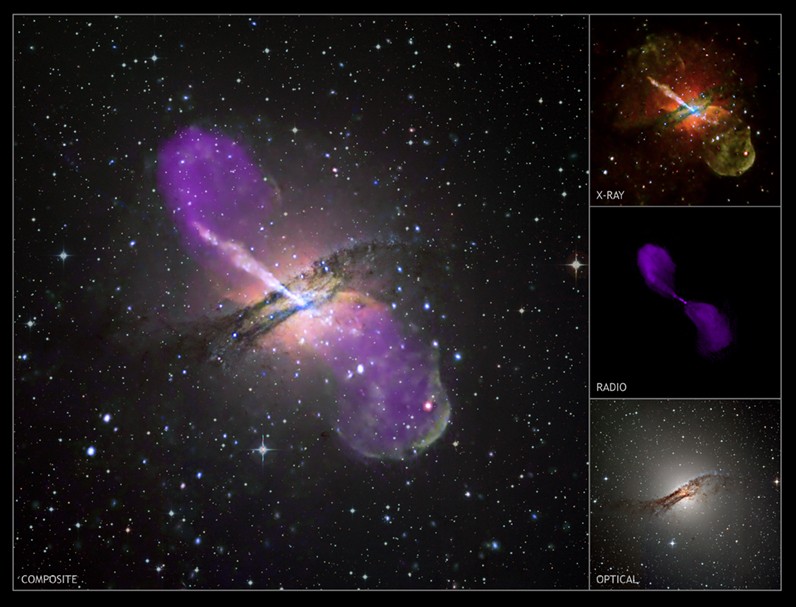
A mere 11 million light-years away, Centaurus A is a giant elliptical galaxy - the closest active galaxy to Earth. This remarkable composite view of the galaxy combines image data from the X-ray (Chandra), optical(ESO), and radio(VLA) regimes. Centaurus A's central region is a jumble of gas, dust, and stars in optical light, but both radio and X-ray telescopes trace a remarkable jet of high-energy particles streaming from the galaxy's core. The cosmic particle accelerator's power source is a black hole with about 10 million times the mass of the Sun coincident with the X-ray bright spot at the galaxy's center. Blasting out from the active galactic nucleus toward the upper left, the energetic jet extends about 13000 light-years. A shorter jet extends from the nucleus in the opposite direction. Other X-ray bright spots in the field are binary star systems with neutron stars or stellar mass black holes. Active galaxy Centaurus A is likely the result of a merger with a spiral galaxy some 100 million years ago.
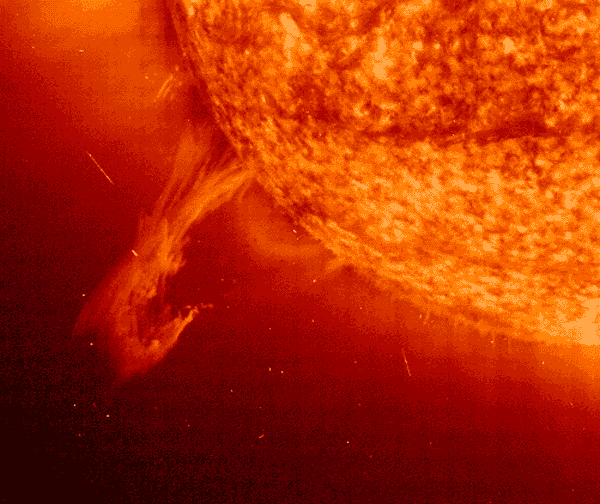
A huge eruptive prominence is seen moving out from our Sun in this condensed half-hour time-lapse sequence (to see it moving, please reload the page). Ten Earths could easily fit in the "claw" of this seemingly solar monster. This large prominence, though, is significant not only for its size, but its shape. The twisted figure eight shape indicates that a complex magnetic field threads through the emerging solar particles. Recent evidence of differential rotation inside the Sun might help account for the surface explosion. The sequence was taken early in the year 2000 by the Sun-orbiting SOHO satellite. Although large prominences and energetic Coronal Mass Ejections (CMEs) are relatively rare, they are occurred more frequently near Solar Maximum, the time of peak sunspot and solar activity in the eleven-year solar cycle.
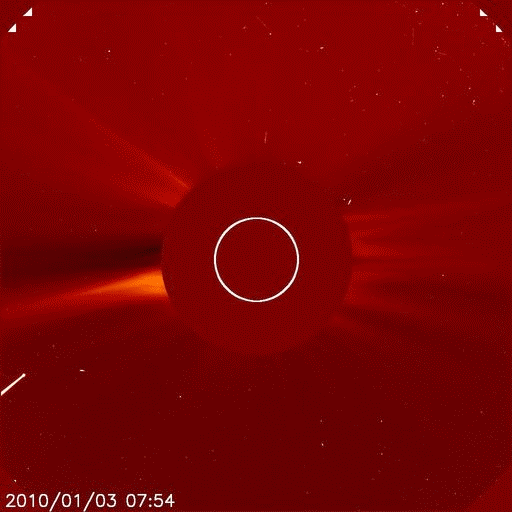
A comet being swallowed by the Sun in January 2010 (seen by SOHO satellite). Observe how the comet's tail continues being pushed away from the Sun by the solar wind, even after the comet's nucleus has disappeared.
More nice pictures can be found in NASA site archive.

The most beautiful star on Earth: my daughter Sara (when she was a few months old).